I’m in love. I’m in love with serene walks and history that runs so deep that it could be considered the cradle of civilisation. In love with ruins, that with a little bit of imagination, transport you to an era of opulence. Basically, I’m in love with Athens. And this does not surprise me.
There is a lot to say about Athens, the beautiful capital of Greece. It is the birthplace of democracy and the cradle of western civilization. It’s also the place that tourists visit for 1, maybe 2 days before heading on to the islands. However, to me, Athens was the fruitful culmination of a long-time dream. It was me getting to see Greek history and mythology come alive before my eyes. Just the way my daughter describes it.
If you’re looking to make the most of your trip to Athens, make sure you pack 2 essential items. First, a book on the history of Athens and second, a vivid imagination. One that can turn ruins into ravishing buildings. Let’s go!
About Athens
Athens is the capital and the largest city in Greece. Scholars consider the city as the birthplace of several intellectual and artistic ideas and consequently the Western civilization. Athens is Europe’s oldest capital, not just Greece. In fact, it’s origins go back to about 3400 years, making it one of the oldest cities in the world.
The name Athens comes from Athena, the patron goddess of the city. According to history, both Athena and Poseidon had to gift the people with something to compete for the title of the guardian. The people decided that Athena’s olive tree was of more value than Poseidon’s saltwater. Athena wins. Athens prevails!
Did you know?
- Athens has experienced almost every form of government. Monarchy, democracy, socialism, capitalism and communism.
- Athens is the birthplace of the modern Olympics in 1896. However, the ancient Olympic games were in fact, not held in Athens.
- The first ever plays in the world, were performed in Athens, thousands of years ago.
- It is one of the sunniest cities in the world. The sun shines for about 270 days.
Things to Do and See
Acropolis
Probably the main reason why tourists travel to Athens is to explore this behemoth citadel. It’s essential that you bring your imagination skills along when you visit the Acropolis. Most of it is in ruins. The most important ruins include the Parthenon, the Propylaea and the Temple of Athena Nike. Acropolis comes from the Greek word ἄκρον which means ‘extremity’ or ‘highest point.’
A Snippet of History. Home to one of the earliest settlements in Greece (5000 BC), the Acropolis is truly a thing of beauty. The first existing records of the Acropolis come from the Mycenaean Civilisation in 1500 BC.
Parthenon
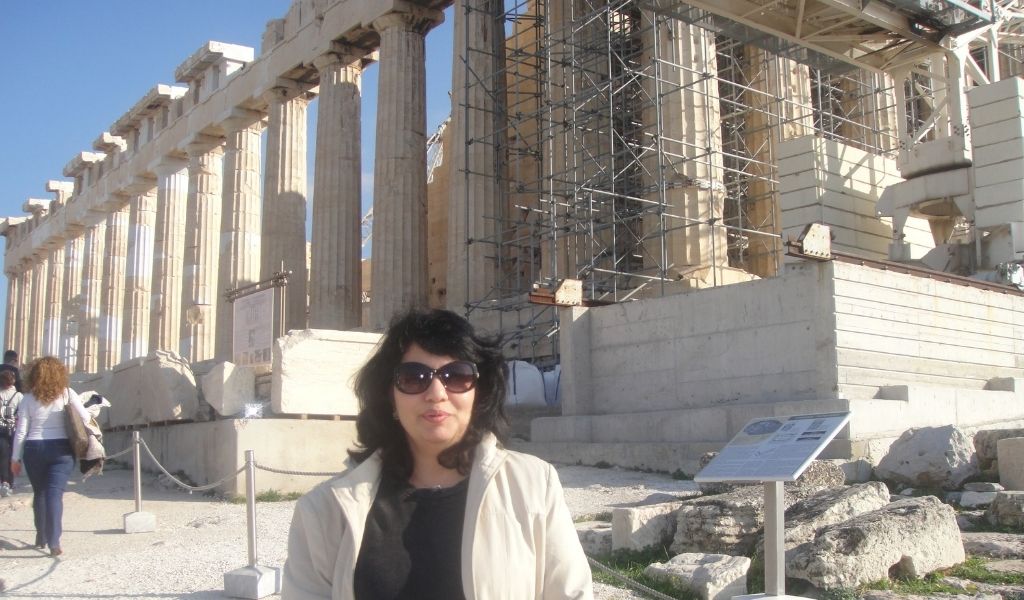
Literally, nothing needs to be said about the magnificent landmark of Acropolis. It stands tall and proud, right in the centre, demanding all the attention. And rightfully so! This marble temple was built between 447 and 432 BC. In the spirit of true symbolism, the Parthenon stands as a reminder of power, wealth and culture in Athens.
A Snippet of History. Pericles is responsible for the construction of the Parthenon. He was a general, an orator and the first citizen of democratic Athens. The Parthenon was built to pay homage to Athens, the goddess of war and wisdom. However, it wasn’t the first attempt at such a monument. A Pre-Parthenon allegedly exists. But, it was destroyed when the Persian Empire attacked Athens. A matter of dispute and debate to this day!
Acropolis Museum
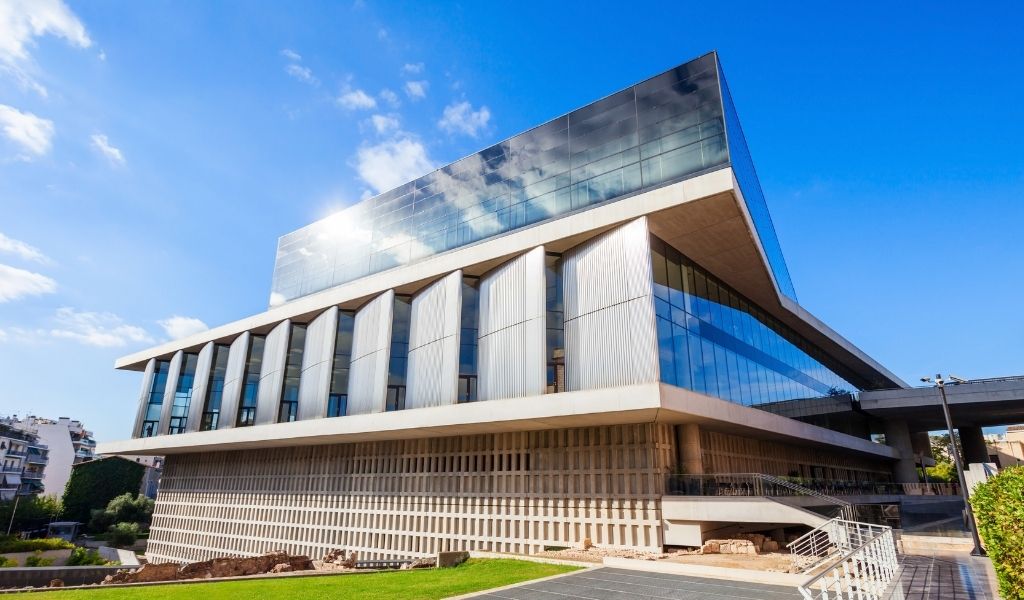
If you really want the historical significance of the Acropolis to come full circle, you have to visit the Acropolis museum. It’s home to over 3000 artifacts that have been excavated from the ruins. Visiting the museum is quite a surreal experience because you’re welcomed by stunning views of the Acropolis, right alongside the exhibits. It’s almost like imagining the artifacts and its history and then placing it into its historical setting.
This place is truly a treat for all history buffs. The museum was founded in 2003 but opened to the public in 2009. You should definitely check out the Gallery of the Slopes, the Archaic Gallery and the Parthenon Procession.
Temple of Olympian Zeus
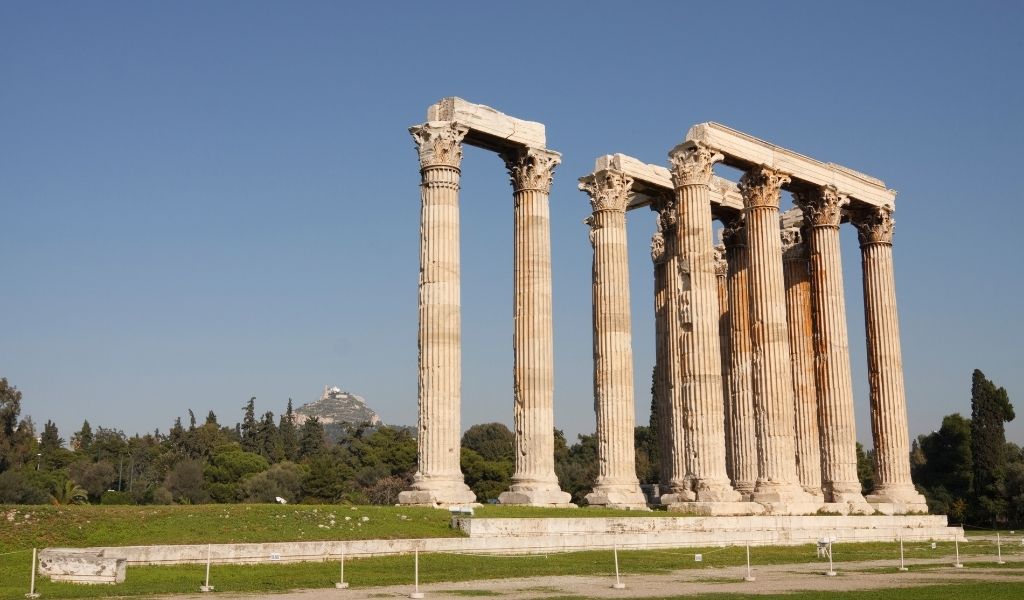
There’ll only be a few tall columns to greet you. 15 remaining out of the total 104. But they’re enough. Enough to visualize that this was once a mammoth of a temple. After all, when you’re paying homage to the king of Gods, you got to go big or go home.
A Snippet of History. The Temple of Olympian Zeus is supposedly the biggest temple of Ancient Greece. Construction began in 6th century BC by Peisistratos. However, it was completed much later in 131 AD by Hadrian. As the name suggests the temple is dedicated to Zeus. He was the king of the Olympian gods and the god of the sky, lightning and thunder.
Ancient Agora of Athens
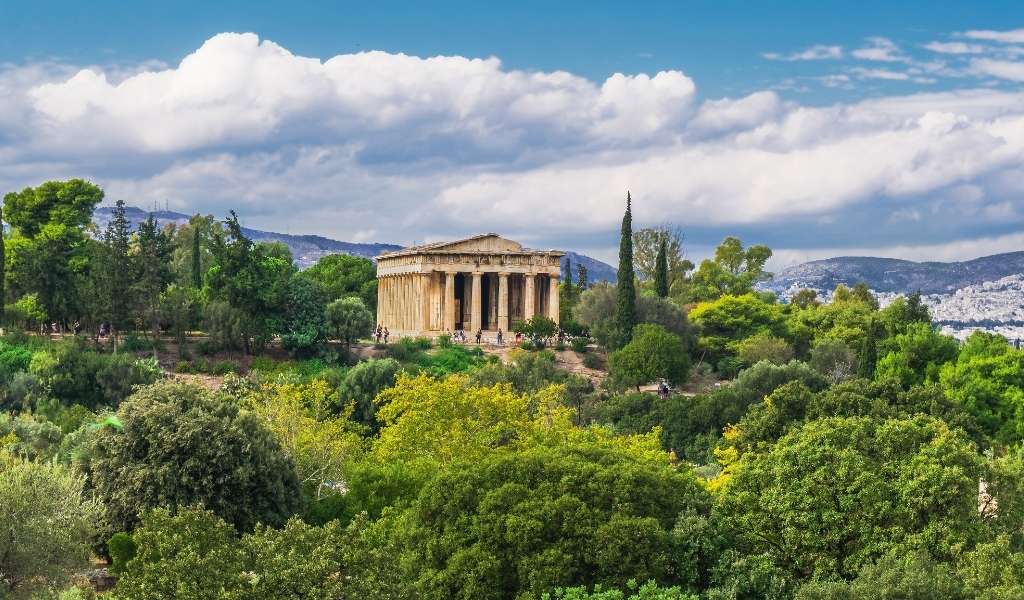
If you’re standing at the Ancient Agora, you’re essentially standing at the genesis point of culture and intellectual thinking. You’re standing in a place where many a scholar has met and mused over ideas. Socrates, Protagoras and the likes. It’s where free-thinking and modern ideas were born.
The Agora comes from the word ‘αγείρω’ which means congregation. It represented an ancient marketplace where people would meet and interact. You’ll find the Agora beneath the northwest slope of the Acropolis. Once again, you’ll have to fuel up with plenty of imagination because the Agoda stands mostly in ruins. You tend to lose its significance without some historical context.
Old Temple of Athena
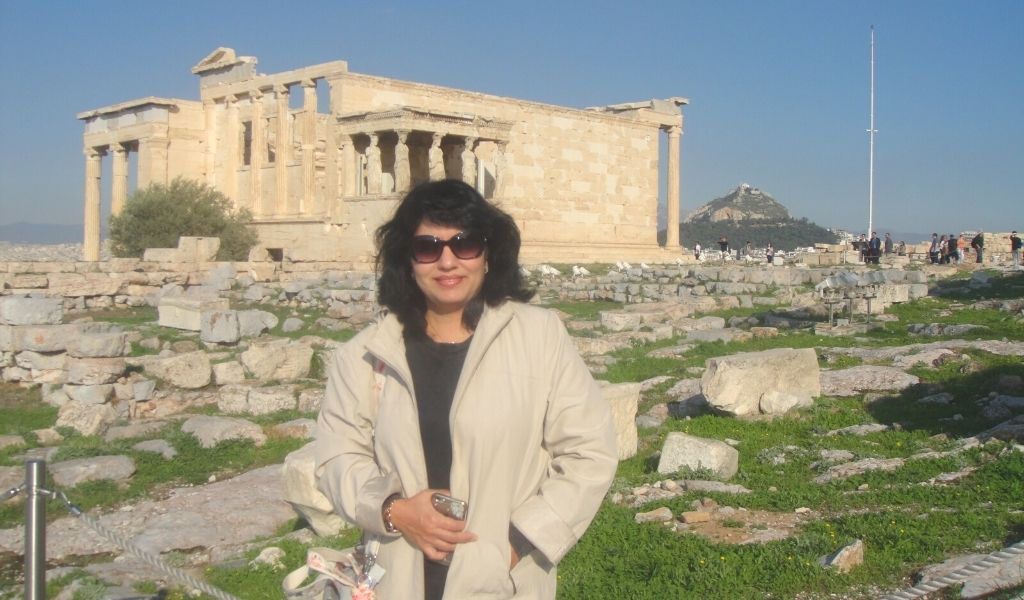
While only a few stones of the old times can be seen, the Old Temple of Athena is definitely a must-visit when in the Greek capital. This temple was destroyed and rebuilt several times. It is located quite close to the Parthenon, is mostly intact and provides some great views.
A Snippet of History. The temple was originally dedicated to Erechtheus, a legendary king of Athens, who was raised by Athena herself.
Mount Lycabettus
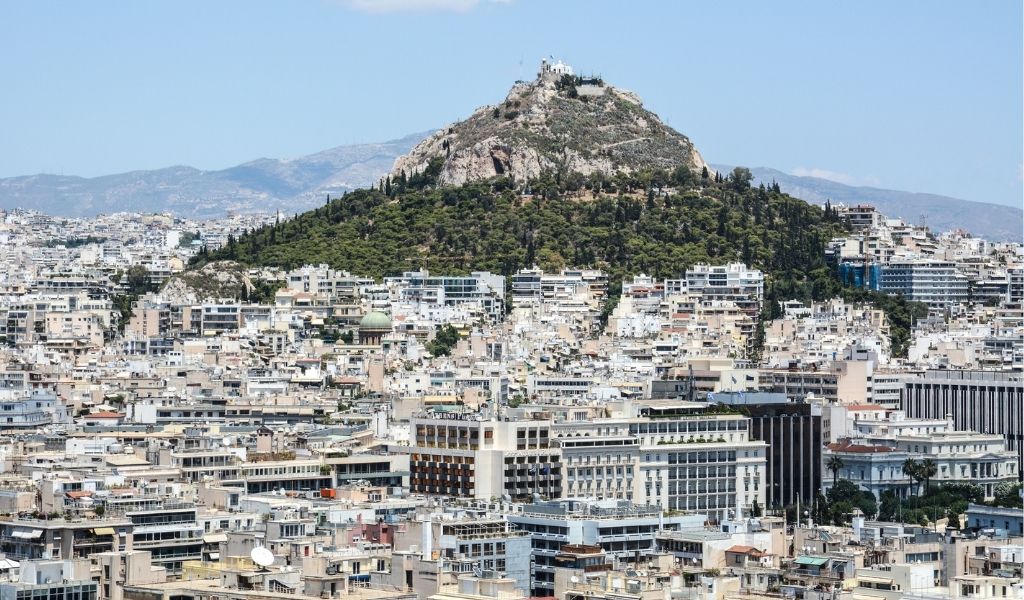
The tallest of the seven hills in the capital, Mount Lycabettus is a must-visit. It’s really hard to miss as well. I mean considering the fact that this particular mountain stands tall and proud, smack dab in the centre of civilisation. You can literally see it from almost anywhere! If you’re looking to grab some astonishing panoramic views of the city, the hike is worth it. Additionally, its a nice little workout and I’ll never say no to that.
A Snippet of History. Lycabettus allegedly comes from the word Lykavittos. This loosely translates to ‘where the wolves go.’ During the Periclean Era (Around 420 BC) wolves were said to roam freely on the mountain as it was their last haven. Hence the name.
National Garden
The National Garden originally the Royal Garden, is a wonderful 15-hectare park in the centre of the capital. This tropical paradise is perfect for a little wind-down after a day of heavy exploration. It’s full of recreational spots, duck ponds and even a little zoo. So, you’re definitely going to enjoy yourself.
A Snippet of History. This garden changed the course of history. Simple as that. While roaming in his then private garden, a monkey bit King Alexander. He died 3 weeks later and with him died the idea of a Greater Greece. A Greece with Constantinople (Istanbul) as its capital. It’s why Greece currently occupies that tiny place on the map. A monkey bite.
Temple of Hephaestus
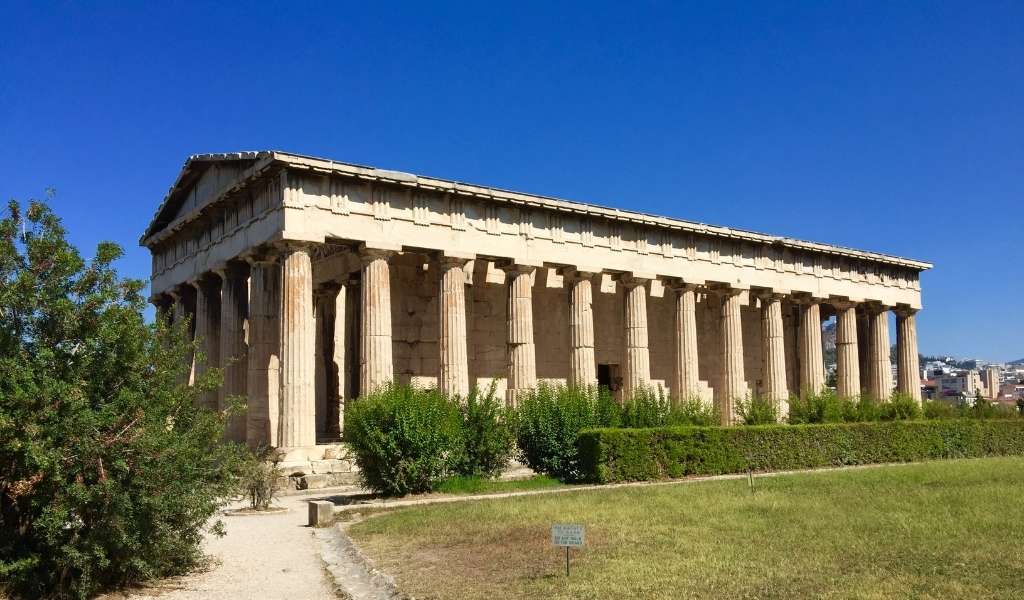
This is probably one of the best-preserved temples in ancient Greece so definitely an Athens essential. It is dedicated to Hephaestus, the god of fire and metalwork. It is located quite close to the Ancient Agora. The temple is a Doric Order Temple distinguishable by its fluted/grooved columns. There’s an ongoing joke that it’s probably one of the only few remaining temples in Greece with an actual roof! ROOFL (Pun Intended)
Theatre of Dionysus
As the name suggests, this theatre is dedicated to Dionysus. And rightly so! After all, he is the god of Wine and drama. It was initially meant to be a temple in the 6th century BC however it got converted into a stage for theatrical performances in the 5th century.
A Snippet of History. The birth of Dionysus is a weird one. Even by mythological standards. The Greek Gods are known to have several consorts. Unfortunately, like in every story of a woman scorned, Zeus’s jealous wife killed his pregnant consort. Zeus, however, saved the baby (Dionysus) by cutting open his thigh, inserting the baby and carrying it to term. That’s one hell of an origin story!
If you have time to spare
- National Archaeological Museum. The largest archaeological museum in Greece dedicated to Ancient Greek Art. It’s quite new, founded only in the late 19th century. With over 11,000 exhibits, it’s totally worth a visit if you have spare time.
- Syntagma Square. The Syntagma or Constitution Square is the central square of Athens. The square has a long history and every major event in Greece has been mourned or celebrated here. Since it’s so centrally located, you’re going to come across it at least once during your trip.
- Temple of Athena Nike. Once again, you’ll definitely come across this temple when in the Acropolis. Dedicated to the Patron Goddess and the namesake of the city, Goddess Athena, these wonderful ruins need to be on your list.
- Explore Plaka. This neighbourhood is the oldest part of Athens and chock full of culture and character. Plaka is so different from the rest of the capital that you feel as though you’re on a Greek island. It has an amazing nightlife scene as well!
- Temple of Poseidon. The Greek people really did this deity a solid. After all, he was the competing god for the patron of the city! Located on a 60-metre cliff at Cape Sounion, you’ll want to visit this temple purely for the views!
Day trips from Athens
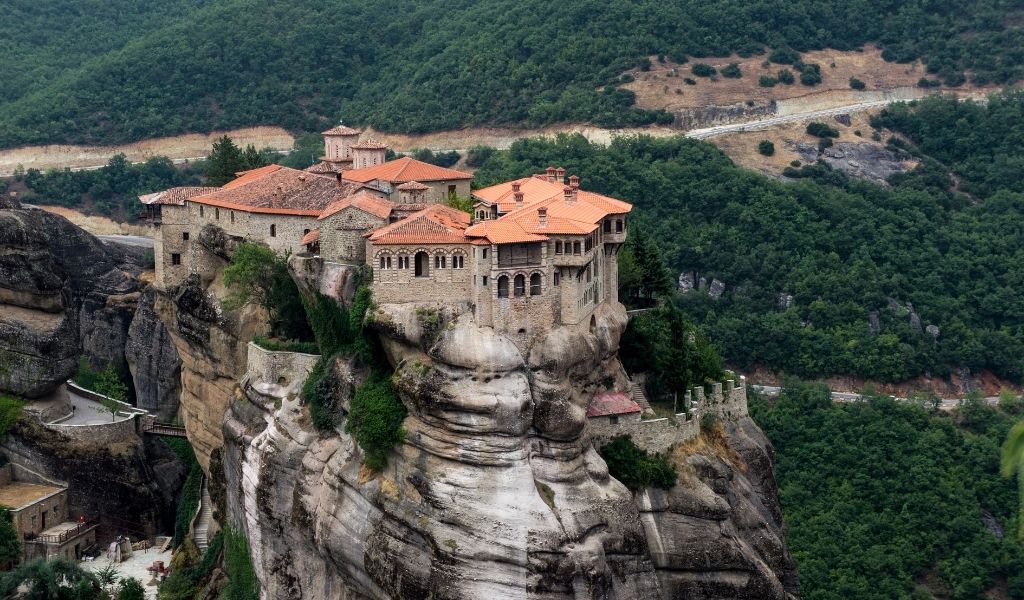
There are several day trips that you can take from Athens. What with it being the capital and all. Here are a few of my favourites.
- Delphi. 180 kilometres away from Athens and a UNESCO World Heritage Site. Delphi is probably as famous and maybe a little more important than the Acropolis. Especially when you consider its contribution to history. You must visit Apollo’s shrine. There is a regular bus service that takes you there or you could go on a tour.
- Meteora. Another UNESCO World Heritage Site, Meteora is famous for its monastery complexes that sit atop several behemoth rock formations.
- Corinth. This ancient wonder has been inhabited since the Neolithic times. Until the rise of Athens, Corinth had been dubbed as the commercial hub and the richest city of the ancient world.
- Hydra, Poros and Egina Island. The three Saronic islands are truly a thing of beauty. You can get there via cruise, ferry or a hydro ship. The islands are extremely picturesque and charming with wonderful views. They’re perfect for a sunny getaway from the city. Greece is, after all, known for its islands.
For more ideas on day trips, you can check out The Culture Trip, Viator or The Crazy Tourist
Getting Around Athens
- On Foot. This is the simplest way to explore Athens since most of the tourist attractions are centrally located and quite close to one another. To be honest, most of them are located within the Acropolis. So really, they’re not that hard to access.
- Metro. With three lines that span throughout the city, the metro is probably the most convenient way to get around. It is advisable to take some time to familiarise yourself with the language and signage before heading out. It won’t take you much time. However, since the language is different its more prudent. Check out this website.
- Train and Tram. These aren’t used too often. However, if you fancy some good views, you can hop on a tram for the sake of experience.
- Bus. While the bus network in Athens is extremely extensive, it isn’t too informative. If you’re not familiar with the language you may have difficulty in understanding where to go. Ask around or use Google Maps if you want to Travel by Bus. Or, you could use the OASA Telematics App to find your closest bus stop and its bus schedule.
Best Time to Visit Athens
- Peak Season. Athens and consequently Greece is extremely busy in July and August. The sun is blazing and the temperatures average around 22 degrees Celsius. The Peak season usually lasts from Mid-June to Mid-September.
- Shoulder Season. Waning crowds and pleasant temperatures make the shoulder season perfect for travel. This is usually from April to Mid June and Mid Spetember to October. So, early Spring and Fall. The temperatures range around 20 degrees.
- Off Season. This is usually from November to March. So, the winter. You might experience shorter days and more rain but the cold is quite manageable. The ferries, however, run on a limited schedule. This time is the best for the budget traveller though; what with less crowds, almost no queuing and several discounts.
Where to stay in Athens
- Plaka. This is Athens’ old town. Like I mentioned before, it is full of culture, character and picturesque streets. It is close to almost everything. Considering it is pretty popular with tourists, Plaka also has several hotels and accommodation at various price points. It is great for first-times, sightseeing and for families.
- Syntagma. Close to the Constitution Square is as good as any location can get. Once again an amazing place for first-times, sightseeing and families. It has a buzzing nightlife and accommodation at various price points.
- Psyri. Undoubtedly, the best place for nightlife. Decently central so a good area for first-timers too. It has several clubs, restaurants and cosy cafes. Some wonderful street art to feast your eyes upon too! It’s super close to Monastiraki as well. Sometimes you can’t tell one from the other.
- Monastiraki. Centrally located so great for first-timers and sightseeing. Just like Psyri, it has a buzzing nightlife and is well connected. It is quite popular for its Flea Market that takes place every Sunday.
- Koukaki. South of the Acropolis and much calmer. It gives you quite the local feel and is perfect for walking. It has several authentic Greek bars, taverns and street food.
- Kolonaki. Not the best place for the budget traveller. Located Northeast of the Acropolis, Kolonaki is full of luxury hotels and boutique shops. Great for shopping though.
What to Eat in Athens

As certified binge-eater and self-proclaimed food extraordinaire, you know I can’t finish a post without mentioning food. These are my top favourites that you just have to try.
- Saganaki. This is cheese. Through and through. Deep-fried cheese that is crispy on the outside and gooey on the inside. Maybe attempt a nice little cheese pull while you’re at it. Just for the gram.
- Greek Salad. Freshness personified. Tomatoes, cucumbers, olives and shallots, tossed with olive oil and topped with some creamy feta.
- Moussaka. The best way to describe it visually is to call it a lasagne. Just without the pasta. A nice mix of eggplant, tomatoes, minced meat, garlic and sometimes potatoes served with a massive helping of bechamel sauce and usually topped with cheese. Carb loading, but also eating your veggies. Let’s call it semi-healthy.
- Gyro. Its quite easy to confuse a Gyro, Souvlaki and Kebab. However, a gyro is essentially meat cooked and roasted on a spit. What’s not to love?!
- Souvlaki. This is basically anything that is grilled on a skewer. So, the meat is really your choice. You can enjoy it just as or with pita bread, sauce and some garnish. Get in my belly already!
- Tzatziki. This popular dip is essentially lightly seasoned Greek yoghurt. It goes well with almost everything. In fact, you can eat it as is too!
- Loukoumades. Now for the sweet treat! Think deep-fried donught balls dipped in syrup and sprinkled with cinnamon. This delectable delight is a crowd favourite.
Athens Travel Tips
- You need cash. Don’t rely solely on your cards cause Athens isn’t a cashless city. Don’t worry too much about finding ATMs though. They’re abundantly located near tourist hotspots.
- Familiarise yourself with the Metro. It’s the best mode of transport in Athens, hands down.
- Use the Beat App. Especially if you’re travelling by taxi. It gives you estimates of ride fares so you can’t be fooled.
- Don’t fall for tourist traps. Especially when it comes to restaurants. If you find employees on the streets pedalling authentic Moussaka to you, its best to avoid them. They usually over-charge and under-deliver.
- Timing is everything. And nothing. Set meal times like lunch at 1 pm and dinner at 7 pm are nothing more than a Utopian concept. Sometimes if you enter a restaurant before 9 pm you’ll find it empty. Quite close to Indian time in the sense.
- The Greeks are expressive. Don’t let that intimidate you. They’re loud and expressive and use several hand gestures. But that’s just the way they are. Again, quite like Indians. Long lost relatives maybe?
I’m never forgetting my trip to Athens. What started off as an official trip ended up becoming a deep-dive into Greek history and mythology. And thank Zeus for that! This trip will be ingrained in my memory forever. I’ll have to go here again. And this time, i’ll be taking my tour guide (Believe me, she knows that much), my daughter with me.
Until then, Bon Voyage!
